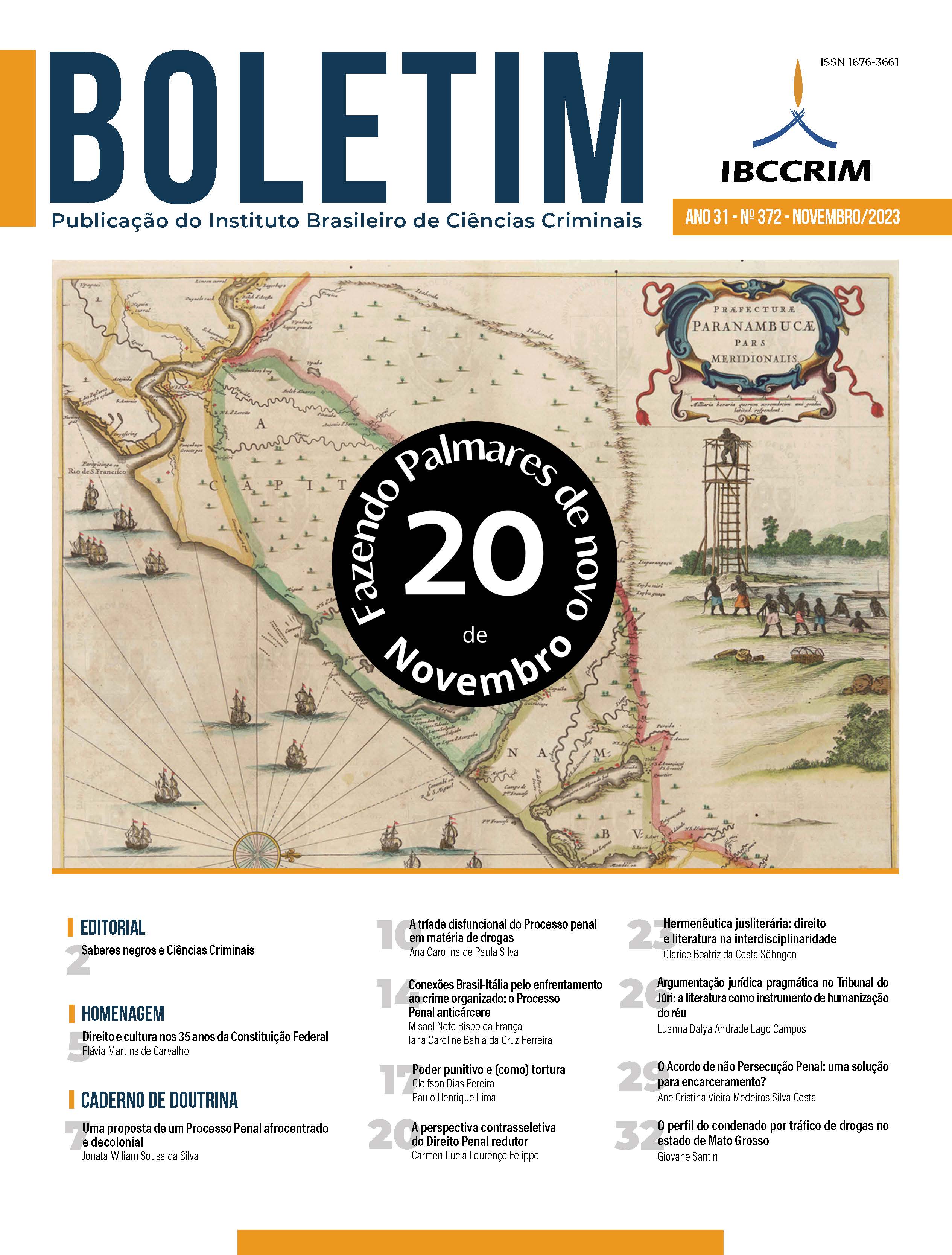Jusliterary hermeneutics: law and literature in interdisciplinarity
Views: 269DOI:
https://doi.org/10.5281/zenodo.10038658Keywords:
Hermeneutics, Law, Literature, Violence, InterdisciplinaryAbstract
In a world where knowledge is increasingly compartmentalized, this article aims to stimulate reflections on a Legal Literary Hermeneutics that encompasses the interdisciplinary relationship between Law and Literature. As they were established in the early 1970s, interdisciplinary studies of Law and Literature appeared branched into several different strands, most of which were strongly influenced by the Anglo-American tradition. Within this context, the possible intersections between these two areas of knowledge offer new perspectives for the interpretation and practice of a legal culture more committed to human understanding, especially in its implications for criminal and Criminal Procedure Law and in the field of Criminology. To effectively illustrate this thesis, fragments from the fascinating literary work “Olhos d’água” by Conceição Evaristo are utilized.
Downloads
Publication Facts
Reviewer profiles N/A
Author statements
- Academic society
- Instituto Brasileiro de Ciências Criminais
- Publisher
- IBCCRIM
References
DUARTE, Constância Lima; NUNES, Isabella Rosado (Orgs.). Escrevivências: a escrita de nós. Rio de Janeiro: Mina Comunicação e Arte, 2020.
EVARISTO, Conceição. Olhos d’água. Rio de Janeiro: Pallas: Fundação Biblioteca Nacional, 2016.
GADAMER, Hans-Georg. Verdade e Método. Tradução: Flávio Paulo Meurer. São Paulo: Vozes, 1999.
KUHN, Thomas S. A estrutura das revoluções científicas. 5. ed. São Paulo: Perspectiva, 1997.
NUSSBAUM, Martha. Cultivating humanity. Cambridge, Harvard University Press, 1997.
SILVA, Joana Maria Aguiar. Para uma teoria hermenêutica da justiça: Repercussões jusliterárias no eixo problemático das fontes e da interpretação jurídicas. Portugal: Almedina, 2008.
Downloads
Published
How to Cite
Issue
Section
License
Copyright of published articles belongs to the author, but with journal rights over the first publication and respecting the one-year exclusivity period. Authors may only use the same results in other publications by clearly indicating this journal as the medium of the original publication. If there is no such indication, it will be considered a situation of self-plagiarism.
Therefore, the reproduction, total or partial, of the articles published here is subject to the express mention of the origin of its publication in this journal, citing the volume and number of this publication. For legal purposes, the source of the original publication must be consigned, in addition to the DOI link for cross-reference (if any).


 Português (Brasil)
Português (Brasil)
 English
English
 Español (España)
Español (España)






